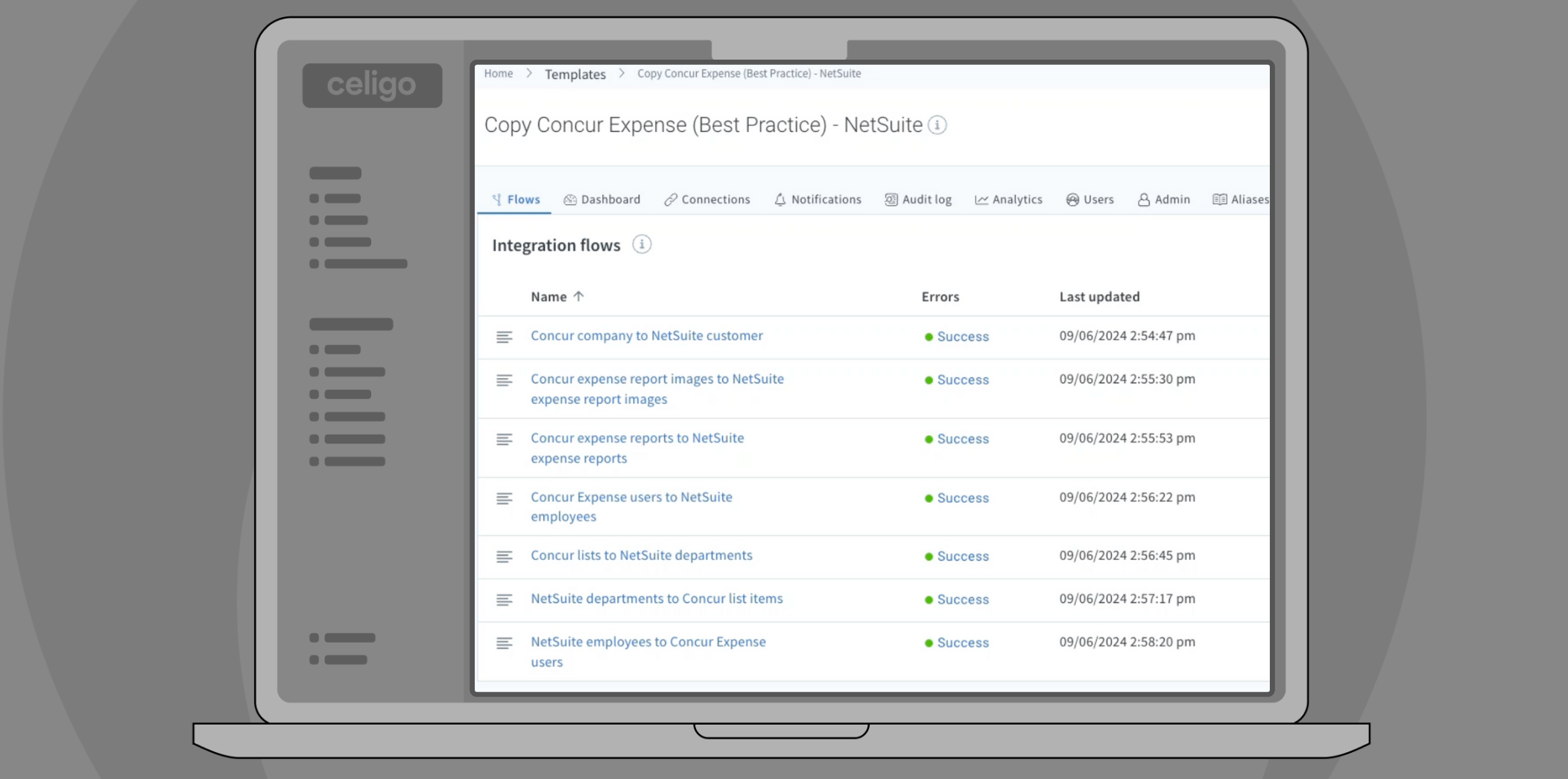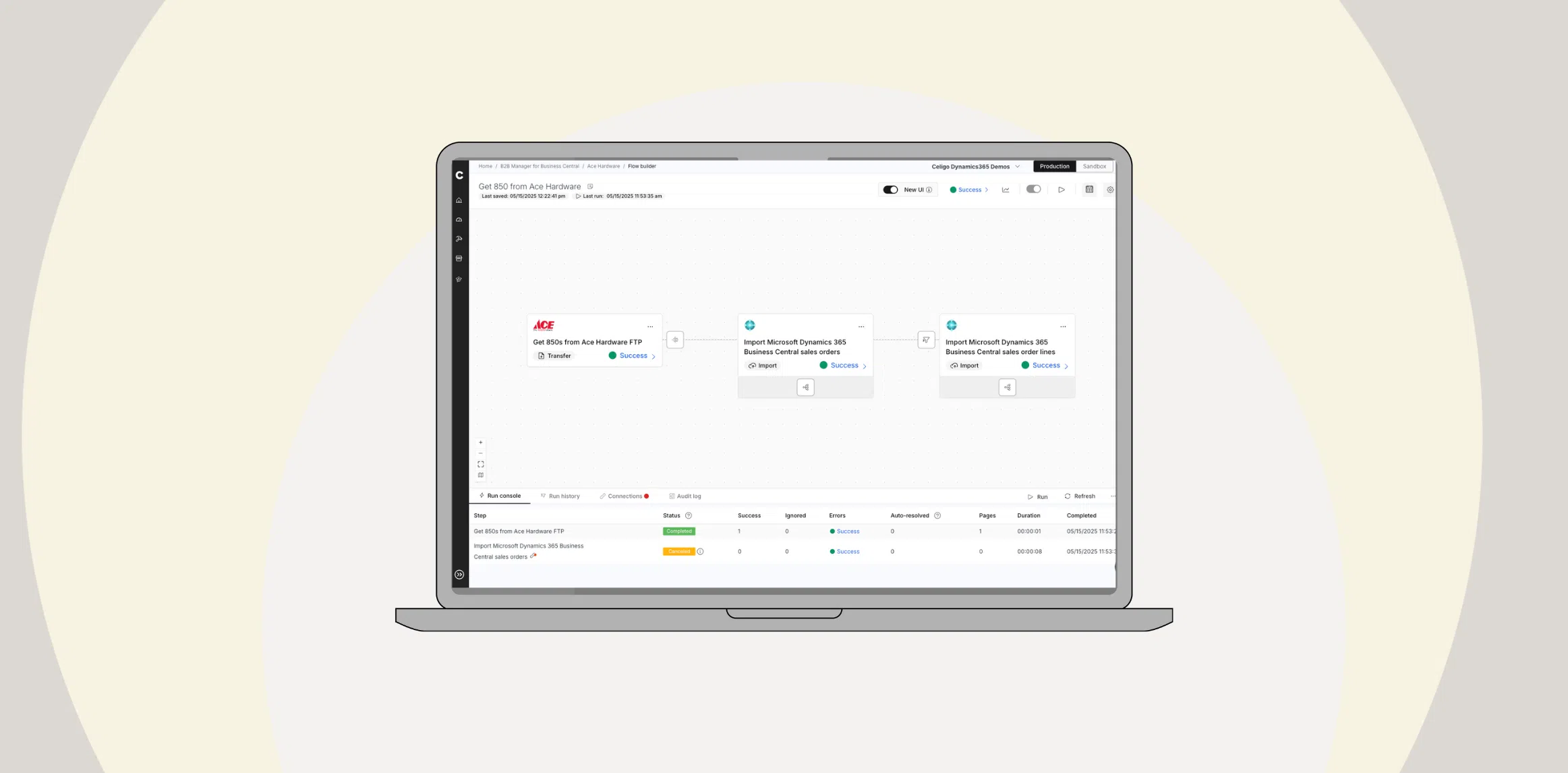Blog
Explore the latest insights from our experts
Dive into integration best practices, industry trends, strategies for digital transformation, and more.
Featured
Celigo + Walmart: Automating Multichannel Fulfillment Ahead of Peak Season


December 2, 2025
Introduction to expense management and ERP integration
In this demo, we’ll show you how to automate the expense management process by setting up and configuring integrations between your ERP and expense management systems.

December 2, 2025
Build agentic AI workflows with Celigo’s prebuilt AI templates
Explore Celigo’s library of prebuilt AI integration templates designed to help teams orchestrate agentic workflows across Finance, RevOps, Support, HR, and more.

November 25, 2025
API governance: Best practices for the full API lifecycle
Discover how API governance prevents common pitfalls like security risks, shadow APIs, and integration inefficiencies, ensuring your APIs stay secure, scalable, and compliant.

November 24, 2025
Operationalizing AI
Learn how IT and operations leaders are operationalizing AI—embedding intelligence into workflows to deliver measurable ROI.

November 24, 2025
How to build scalable Microsoft Dynamics 365 EDI integrations
Learn how to automate and scale EDI integrations in Microsoft Dynamics 365 Supply Chain Management. Explore a modern approach to managing trading partner workflows, improving visibility, and eliminating custom code and manual processes.

November 21, 2025
Demystify your data: Transform your business with reverse-ETL
Learn about reverse-ETL and how syncing insights between your data warehouse and operational systems can enhance agility and efficiency.

November 21, 2025
Optimizing onboarding with HR automation
Learn how employee onboarding automation makes setting up new employees for success easier than ever.

November 21, 2025
Maximizing NetSuite: Best practices for system integration
Unlock the full potential of NetSuite with Celigo’s iPaaS. Integrate your tech stack and gain real-time data.

November 21, 2025
Unlocking the benefits of ERP and CRM integration
Discover how ERP and CRM integration can streamline operations and boost efficiency. Contact us today.

November 21, 2025
Meet iPaaS: Empowering teams for integration success
Discover how to empower your teams, drive innovation, and streamline operations for future growth with Celigo’s iPaaS.

November 20, 2025
Best Mulesoft alternatives for 2026
Compare 10 MuleSoft alternatives. Find faster time-to-value, lower TCO, and easier scalability. Expert reviews updated November 2025.

November 20, 2025
From friction to flow: Automate workflows with NetSuite-Salesforce integration
Discover how integrating NetSuite and Salesforce with Celigo’s iPaaS can streamline your lead-to-cash process.

November 20, 2025
What are ERP integrations?
Explore the essentials of ERP integrations, their benefits, challenges, and best practices for optimizing enterprise workflows and efficiency.

November 17, 2025
Context engineering: Best practices for data integration
Learn how to engineer model-ready context for AI systems using structured data flows, governed integration patterns, and prompt design strategies. Discover best practices for orchestration, transformation, and reliable context delivery across enterprise systems.

November 11, 2025
7 Data Integration Challenges (And How to Solve Them)
Discover seven critical data integration challenges that derail projects—from data quality issues to error management gaps. Learn proven solutions to ensure success.

November 11, 2025
10 key benefits of data integration: from reporting to revenue
Learn the top benefits of data integration for IT leaders: eliminate spreadsheets, access real-time data, and consolidate tools—all on one platform.
Your monthly automation fix.
Get a curated list of Celigo’s latest insights, straight to your inbox.
